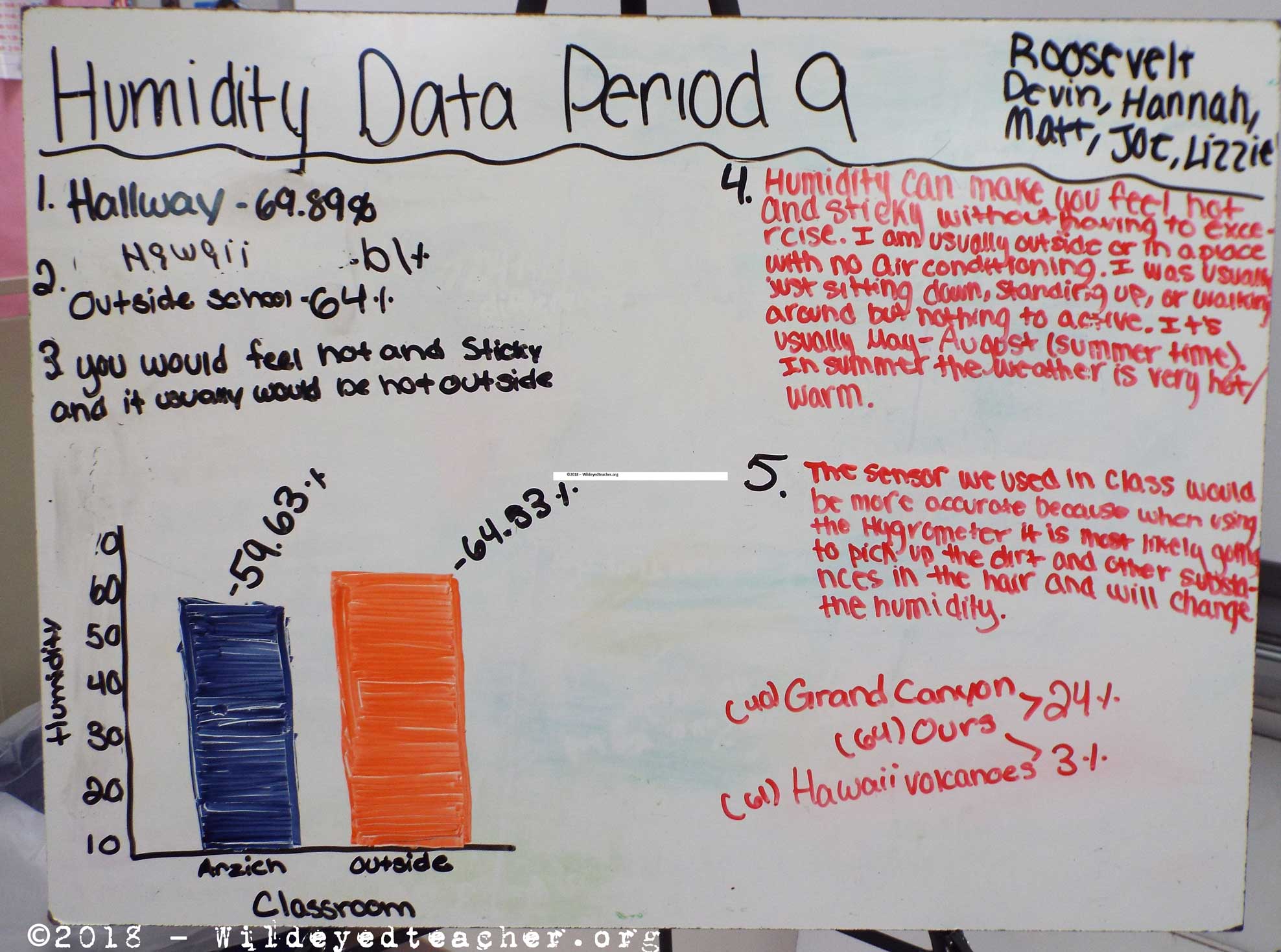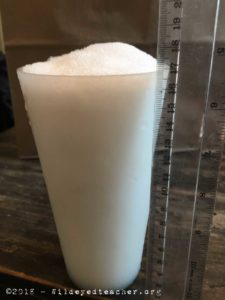How does water shape our world? This is the title and subject of our current science unit. The students and I have been discovering how water moves in our world and how water shapes the land and landforms around us.
We’ve used national parks – specifically Grand Canyon National Park and Hawaii Volcanoes National Park to begin the study of landforms and how water moves through these two national parks and has shaped landforms. In the coming weeks, we’ll be using three additional national parks to look for patterns, similarities, and differences: Shenandoah, Rocky Mountain, and Isle Royale.
 When we returned from winter break, we used the Vernier Labquest2 hand-held technology and relative humidity sensors to measure the water vapor in the air. We were fortunate to have a cold dry day followed by an unseasonable warmer (10°C / 50°F) January day with relative humidity readings well above 50% in the building and outside. It was an excellent experience for the students to work on their science data collection and analysis skills. The groups used the data to continue to develop their science presentation skills by whiteboarding their group’s results.
When we returned from winter break, we used the Vernier Labquest2 hand-held technology and relative humidity sensors to measure the water vapor in the air. We were fortunate to have a cold dry day followed by an unseasonable warmer (10°C / 50°F) January day with relative humidity readings well above 50% in the building and outside. It was an excellent experience for the students to work on their science data collection and analysis skills. The groups used the data to continue to develop their science presentation skills by whiteboarding their group’s results.

We’ve since established that water can be found in one of eight reservoirs – oceans, glaciers, groundwater, lakes, the soil, the atmosphere, rivers, and living things. Our science students have discovered that water is constantly moving from one reservoir to another – flowing, evaporating, condensing, and precipitating in the water cycle. We also determined that most of the water in the world is stored in two reservoirs – oceans and glaciers.

On the snow day (2/9), I challenged the students to learn how much water is in snow with an extra credit assignment. I received 33 submissions and a wide range of responses. I, too, completed the assignment as well – twice. The results ranged from 10.5 to 57% with most of the water-snow ratios in the 20-35% range, which is where my results were. When the students returned Monday, we discussed and graphed the results on a snow plot. The typical ratio of water content in snow is, on average, 10% – but the range can be as high as 15% – heavy wet snow or as low as 7% – light fluffy snow.
It was an wonderful opportunity to extend the classroom and be curious and wonder.
The students have an additional opportunity to learn more about how water moves through our world by taking part in an optional field trip to the Springbrook Water Reclamation Center (SWRC) on Thursday, March 1. Information about the field trip was shared with the students in class Friday (2/16). There is no cost for the field trip: however, March 1 is a non-attendance day for IPSD and students will need their own personal transportation to and from the SWRS. If you would like more information about the field trip, please contact me via my school e-mail.
As we bring the unit and our learning to close, we will be looking at how water’s movement has shaped, and continues to shape, the Earth’s land and landforms.
It’s all about being curious and full of wonder.
